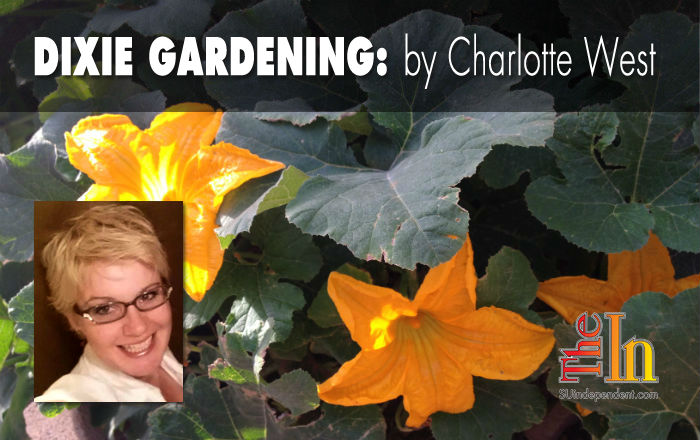 Written by Charlotte West
Written by Charlotte WestGrowing a vegetable garden isn’t the only fun gardening available to you. Ornamental gardening can be equally rewarding. From beautiful flowers to lush herbs, all gardens have something to offer – and many offer duel benefits.
Take gourds for example. In the fall they add such a punch of color to holiday decorations. Birdhouse gourds can provide an endless source of creativity. Loofah gourds are simply amazing. Loofahs are a beautiful choice of gourd to grow. The plants climbs and trails beautifully. Their large yellow blooms attract the much needed bees to your garden. Loofahs in their many varieties can actually be harvested while young ( about 4 to 6 inches) and eaten as you would a zucchini or squash, making them a great addition to a stir fry, or sliced like a cucumber.
If you choose to allow the loofahs to grow large and harden you can remove the outer skin and dry them so you can enjoy the benefits of the loofah sponge. Using the dried gourd to scrub dishes or combine with your favorite bath salts for a deep skin exfoliation.
And take the beautiful day lily. With so many breathtaking varieties, you can not only have a colorful garden, but the buds and blossoms can be sauteed in butter and salt and added to your favorite tomato or squash dish. Or by allowing the flowers to dry, you can later use them to spice up your winter soups or stews.
Sweet Basil is a favorite herb of many gardeners. It makes the perfect pesto. However, it also is a natural mosquito repellent. And when you lay the leaves of sweet basil over freshly picked tomatoes you can keep those pesky fruit flies away.
Another herb that has tremendous benefits is Russian Comfrey. The plant grows into a lush beautiful plant. And by harvesting the first young spring leaves you can eat them as you would any leafy green vegetable. They are extremely high in vitamins A and C. But the real amazing benefit of this plant is that the leaves of the comfrey plant are important to your compost. The reason being is that they have a similar carbon/nitrogen ratio to that of barnyard manure.
Let’s not forget the easy to grow Aloe. We all know how it helps to soothe a burn, but the juice it emits can also help dress a tree wound, sealing the tree wound from potential invading insects. And while you are at it, occasionally throw some aloe in
your chickens’ water. It can build a strong immune system and help the chickens fight off certain diseases.
Some plants have dual purposes, going so far as to shock you with the many ways they can be used. The same plant can at times be all of the above: beautiful, ornamental, and edible. So get to know your plants. Some of your yearly favorites just may be waiting to show you their true potential.
Charlotte West moved to southern Utah in 2004 from the farmlands of southern Arkansas, where cultivating the earth is a way of life. Her experiences give her a unique perspective on how plants grow, adapt, and survive in different climates. She finds great joy in sharing her knowledge with others and tending to her garden. From seedlings to 70-year-old elms, she can help you with your horticulture needs.
Follow The Independent on Facebook Google+ Twitter Instagram Tumblr LinkedIn




